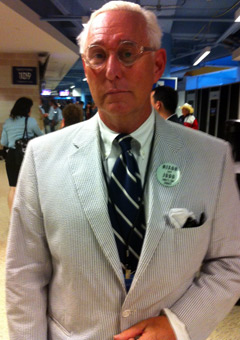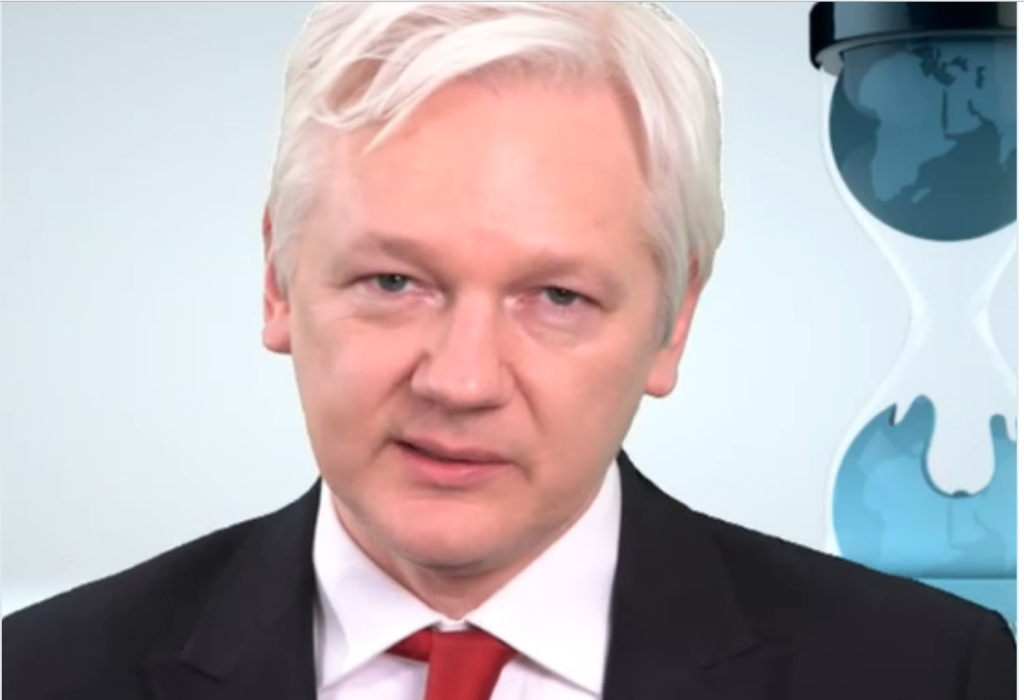The indictment of Roger Stone, confidante of President Trump, has got Wikileaks worried. Julian Assange should be concerned too.

The indictment, handed down by Special Prosecutor Robert Mueller and a Washington DC grand jury, makes Wikileaks look bad.
In August 2016, the organization denied it had any “direct” connection to Stone, an answer that now appears to be deliberately deceptive. Today, the group tweets that Stone’s indictment is “new evidence of no back channel.”
That’s putting a brave face on blarney. In fact, the indictment of Stone illuminates in compelling detail how the Wikileaks-Trump back channel functioned.
It is a sad story really. What Assange did with Chelsea Manning’s leak of the Collateral Murder video and the State Department cables was a public service. It was painful for the U.S. government but, like Edward Snowden’s leaks, it was public service nonetheless.
Now Assange’s good work is juxtaposed with his furtive machinations with Stone, a scoundrel of the first order. According to the indictment, Stone “was contacted by senior Trump campaign officials to inquire about future releases” from “Organization 1,” clearly a reference to Wikileaks.
Stone, in turns talked to an associate, identified only as Person 2, who was in contact with Assange, identified as “head of Organization 1”
[Here’s handy scorecard for deciphering the indictment. Person 1 appears to be racist conspiracy theorist Jerome Corsi. Person 2 appears to be Randy Credico, a British talk show host and friend of “high ranking Trump campaign official,” who is almost certainly Steve Bannon.)

In August 2016 Assange appeared on Credico’s radio show to talk about release of information about Hillary Clinton and the Democrats.
When Stone asked Credico the show went, the host replied “He didn’t say anything bad. We talked about how the press is trying to make it look like you and he are in cahoots.”
In fact, Stone and Assange were in cahoots, which my dictionary defines as “colluding or conspiring together secretly.”
In one of the most revealing passages, the indictment says Stone used the backchannel to send a research request to Assange.
Stone’s Request
In September 2016, after a news story reported on a controversy about Hillary Clinton’s tenure as Secretary of State, Stone emailed Person 2 with a specific research request.
“Please ask [Head of Organization 1] for any State or HRC email from August 10 to 30 particularly August 20, 2011, that mention [subject of the story] or confirm this narrative.”
The next day Stone texted Person 2 to remind him to “Pass my message… to head of Organization 1” The contact replied: response: “I did.”
Stone’s contact, in turn, forwarded the request “to an attorney with the ability to contact” Assange, possibly a reference to Assange’s adviser Sarah Harrison. Stone was copied on the message.
When Wikileaks held a press conference in early October 2016 but did not release any new material on Clinton, a “high-ranking Trump campaign official” asked Stone about future Wikileaks releases. (Reuters says it has confirmed the “official” is Bannon).
Stone’s reply intimated he had knowledge of Assange’s state of mind and his future plans. He told Bannon that Assange had a “[s]erious security concern” but that Wikileaks would release “a load every week going forward.”
And that is what happened. Wikileaks released 33 tranches of documents over the course of the next month, including some 50,000 DNC emails.
The indictment goes on to say that Stone’s sworn testimony to the House Intelligence Committee was riddled with lies. Stone said he had no emails or texts about Wikileaks. The indictment identifies dozens of them. If Stone wasn’t in cahoots with Wikileaks, why would he lie about his communications?
Stone testified he was merely asking his contact to confirm what Assange was saying publicly. Stone’s words in the cited texts and emails refute his own claim. The veteran dirty trickster played a trick on himself.
Wikileaks’ defense is first, that Stone is a liar, and second that his boasts of inside knowledge about Wikileaks during the 2016 campaign were simply another lie, a bluff in which pretended to have contact with Assange when he really didn’t. That claim is now defunct. The Trump-Wikileaks backchannel has been confirmed.


